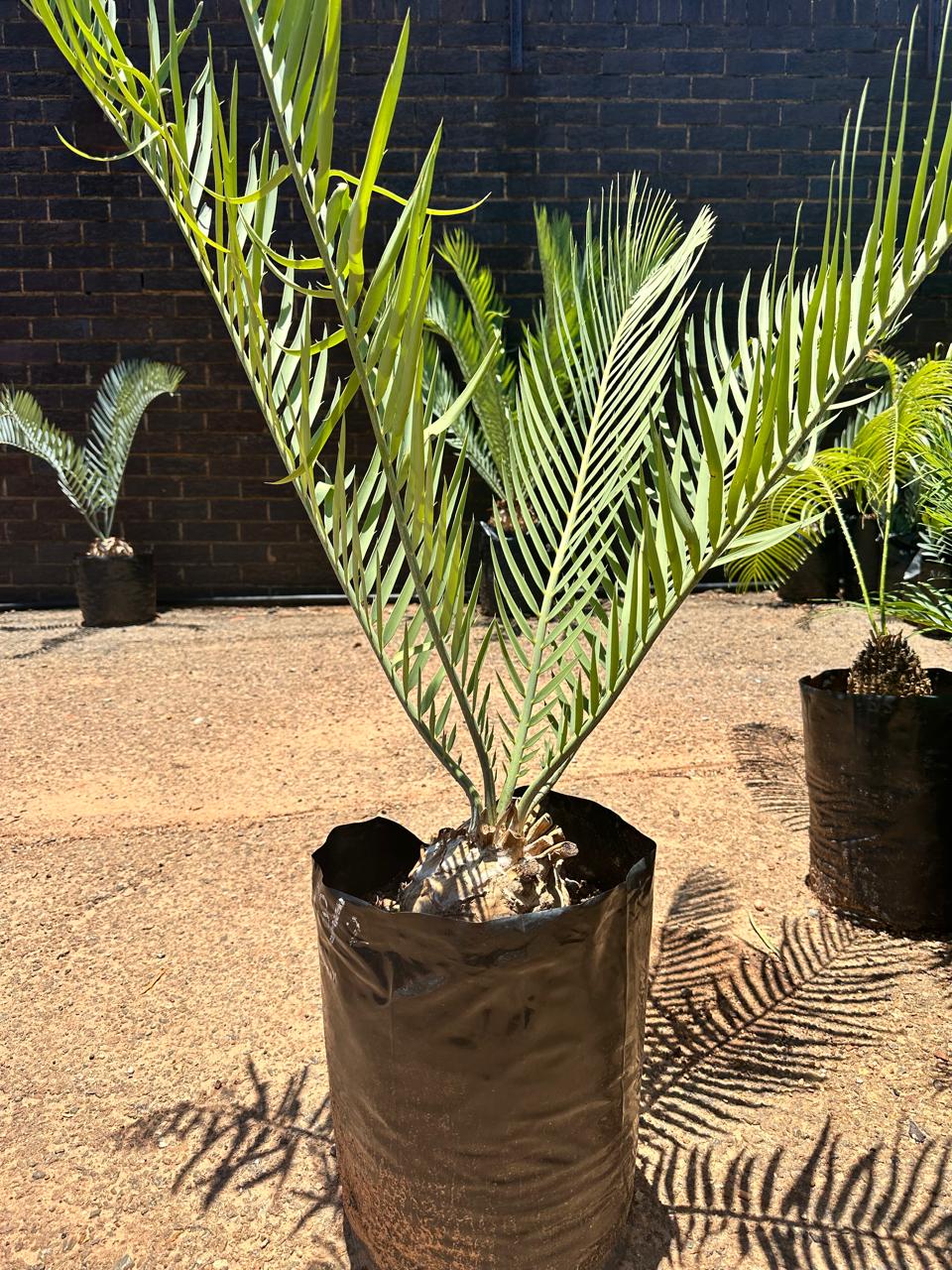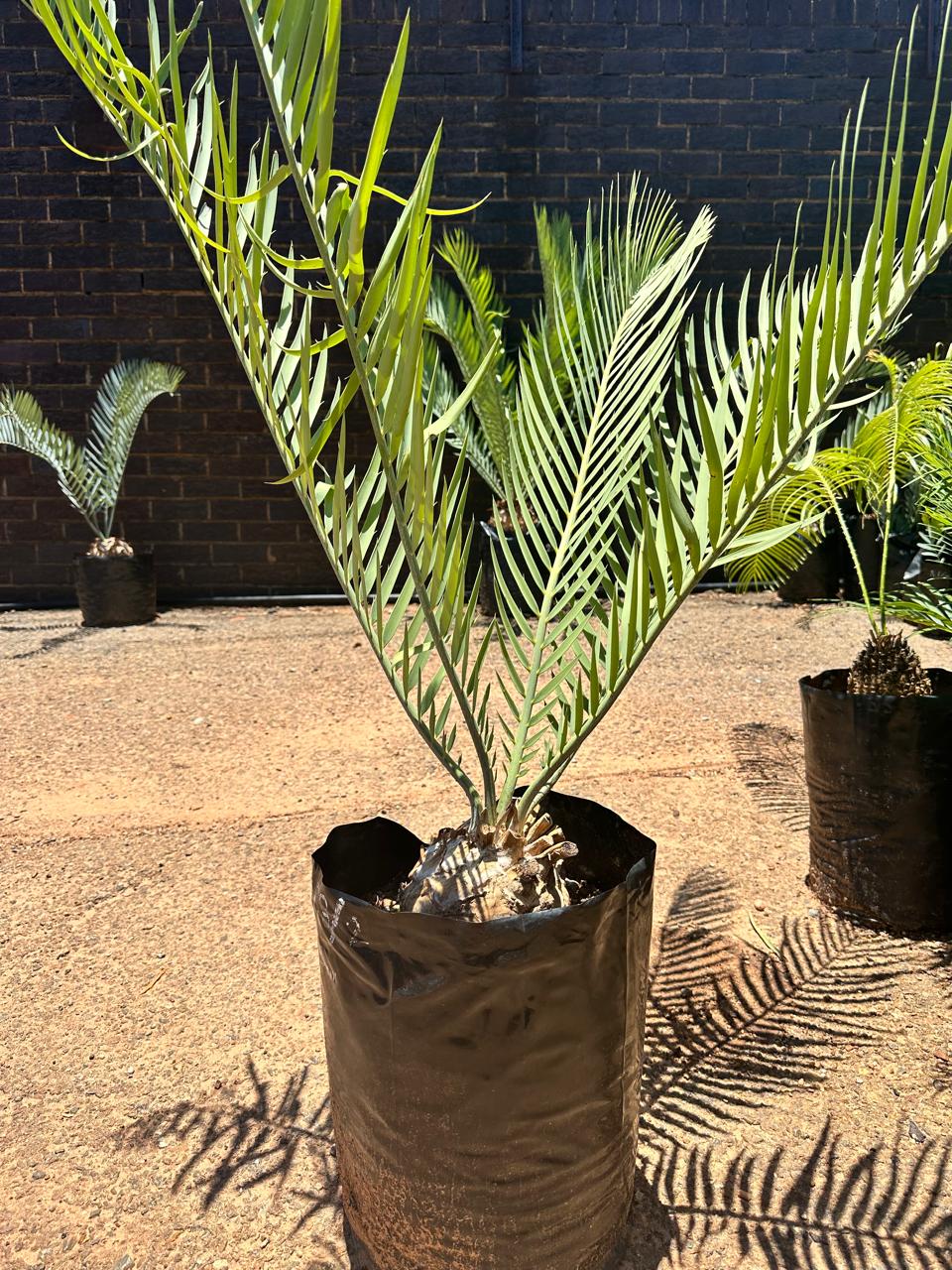


Encephalartos dyerianus
The Lowveld cycad (Encephalartos dyerianus) is found only on a single granite hill in the Transvaal Lowveld, north of Mica, South Africa. It grows at an altitude of around 700 meters in a subtropical climate with hot summers and mild winters. The population is limited, occupying most of the hilltop.
Cones
Both male and female cones of E. dyerianus are ovate-cylindrical in shape. Female cones are 40-50 cm long and 9-12 cm in diameter, with a grayish to buff-colored bloom. Male cones are smaller, measuring 10-17 cm in length. Each plant typically produces 3-7 cones per season. Cone production has been regularly observed, though damage from tree squirrels often prevents cones from maturing. Conservation efforts have included a reintroduction program to propagate seedlings and restore the population.
Leaves
The leaves of E. dyerianus are straight and grow up to 1.25 meters in length, acquiring a yellowish-green hue as they mature. The leaflets are 19-21 cm long and 1.0-1.5 cm wide, arranged in pairs along the rachis. Lower leaflets are reduced in size with 4-5 prickles and 1-2 thorns, creating a distinct "collar" at the base. The leaves twist slightly toward the tip and display a powdery, bluish-gray bloom that fades with age. Dead rachises form a "skirt" around the stem just below the crown.
Stems
The stems of the Lowveld cycad are thick and robust, growing up to 40 cm in diameter. The surface is covered with small leaf-base scars, giving it a rough texture. The plant often produces suckers from the base, forming clumps of 3-4 stems. The crown of the stem is densely packed with bracts, providing protection from the environment. This species grows in exposed rocky outcrops, with older plants sometimes draping over rocks. The stems are covered with grayish or buff-colored woolly bracts.